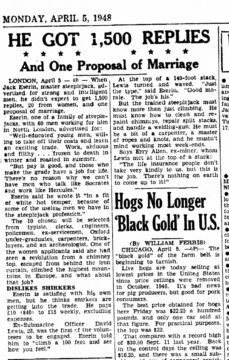For the guitarist, alternate tunings expand the sonic possibilities of the instrument. But where, say, a progressive metal player will add a seventh or eighth string, pitch everything down, and get technical, the opposite is the case with “open” tunings in folk and blues. They are an ideal basis for slide guitar and three-chord, 12-bar vamps, and became the perfect platform for Keith Richards, giving him the room he needed to translate the music of his folk heroes into the gritty, distorted rock and roll of the Stones.
Feeling like he had gone as far as he could in standard tuning, Richards first turned to an open D on the band’s 1968 return to roots, Beggars Banquet and non-album single “Jumpin’ Jack Flash.” In his autobiography, Life, he describes how he moved to open G from a desire to imitate the five-string banjo: “With the five-string it was just like turning a page; there’s another story. And I’m still exploring. With five strings you can be sparse; that’s your frame, that’s what you work on. ‘Start Me Up,’ ‘Can’t You Hear Me Knocking,’ ‘Honky Tonk Women,’ all leave gaps between the chords.”
As Keef tells it, the great Ry Cooder — who plays on Let it Bleed and Sticky Fingers — first introduced him to five-string open G tuning in the 60s, thirty years before curating Cuban music for the world on Buena Vista Social Club. Cooder “had the tunings down. He had the open G,” Richards writes:
The advantage (of the open‑G tuning) is that you can get certain drone notes going. It’s an open‑G tuning, with the low E‑string removed and there’s really only three notes you use. My favorite phrase about this style of playing is that all you need to play it is five strings, two notes, two fingers and one assh*le.
Doing an impression of a mean Ike Turner, Richards demonstrates “that five-string sh*t” above on a beat-up Martin acoustic at the top of the post. Guitarists who cover the Stones in standard tunings “know something’s wrong, that an element is amiss,” writes George Rajna at Huffington Post. “Altering to Keith’s open ‘G’ tuning makes songs such as ‘Can’t You Hear Me Knocking’ simple to play.”
Open G can also help players break out of a six-string rut. As Keith says, when he “found the five-string, it was like discovering a new instrument.” Cooder, it seems wasn’t very happy about Richards taking his licks, calling the Stones “bloodsuckers” in a 70s Rolling Stone interview. But as far as Keef is concerned, it seems, everything’s fair game, and “if it’s in the bones, it’s in the bones,” he writes.
Related Content:
The Rolling Stones Release a Long Lost Track Featuring Led Zeppelin’s Jimmy Page
Josh Jones is a writer and musician based in Durham, NC. Follow him at @jdmagness






